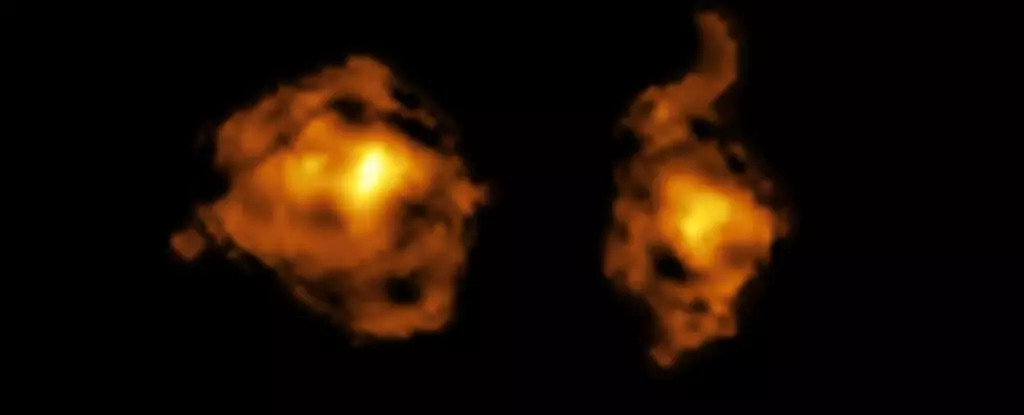In a remarkable cosmic event, astronomers have identified a unique phenomenon described as a “cosmic joust,” where one galaxy unleashes a stream of radiation from its supermassive black hole, effectively impeding the development of star formation in a colliding galaxy. This astronomical occurrence marks a pivotal moment in our understanding of galactic interactions, showcasing the dramatic impact that a quasar can have on another celestial body in the universe. Such observations not only enrich the tapestry of celestial dynamics but also present a fertile ground for scientific inquiry and discovery.
The Nature of Quasars and Galactic Mergers
To understand this cosmic joust fully, it is essential to recognize what quasars are: luminous entities powered by supermassive black holes consuming vast amounts of material. As these black holes feed on gas and dust, the surrounding matter is heated to extreme temperatures, resulting in immense energy that radiates throughout the cosmos. As observed in this collision, the quasar’s jets—the result of material being propelled along magnetic field lines—emerge as powerful beams, transporting energy and radiation that are capable of sweeping away material essential for new star formation in nearby galaxies.
On a broader scale, galactic collisions are not rare events; rather, they are fundamental processes that shape the universe. Galaxies, interconnected through dark matter, frequently merge, and this collaborative dance of cosmic bodies contributes to evolutionary changes within them. Through repeated gravitational interactions, these galaxies spiral closer until their destinies are irrevocably intertwined—a phenomenon occurring over millions of years, underscoring the grandeur and time scales involved in the universe’s dynamics.
The Catastrophic Effects of the Joust
As the quasar’s radiation strikes its counterpart in this instance, the repercussions are stark. In the ‘wounded’ galaxy, star-forming clouds are effectively destabilized, limiting the conditions necessary for new stars to ignite. This suppression of star formation is a vital observation for astronomers, suggesting that the influence of quasars may extend far beyond their immediate surroundings. The cosmic joust serves as a reminder of the mighty forces at play in cosmology, posing challenges for the birth of future stars.
The destruction of star-forming regions raises questions about the cyclical nature of cosmic creation and destruction. While one galaxy may suffer in the process, it is also vital to acknowledge the complex interplay of dynamics—namely, how disturbed regions can sometimes yield fruitful conditions for subsequent star birth. The aftermath of such cosmic collisions may eventually lead to new stellar nurseries formed from the chaotic mixing of gas and dust; however, the immediate ramifications are alarming and complicated.
The Broader Implications for Galactic Evolution
Intriguingly, the quasar not only suppresses star formation in its neighboring galaxy but also indirectly contributes to a shift in its own star-generating capabilities. This self-defeating behavior highlights a paradoxical outcome where the act of consuming material leads to outputs that deny the galaxy the resources to foster new stars. The paradox of quasar activity causing a “quenching” effect underpins a critical principle of astrophysics: that creation and annihilation often go hand-in-hand in the universe’s evolutionary narrative.
The findings from this cosmic joust set a new precedent for future studies of galaxy interactions and the influential roles that black holes play in galactic ecology. As researchers delve deeper into these celestial phenomena, they may unravel further complexities that govern star formation at universal scales. It is evident that understanding the consequence of such high-energy events transcends mere observation; it calls for a reexamination of established theories on galaxy formation and evolution.
Seeking New Perspectives in Cosmic Evolution
The cosmic joust is a testament to the intricate ballet of forces operating within the universe. By studying these phenomena, we gain insights into how violent encounters in space can yield both catastrophic results and generative outcomes. Such dualities challenge astronomers to rethink the narrative of cosmic evolution, pushing the boundaries of how we understand our universe. As we continue to explore the farthest reaches of space, these celestial events serve as keys to unlocking the mysteries of cosmic life cycles and the fundamental forces that shape our existence within this vast, ever-evolving cosmos.


Leave a Reply